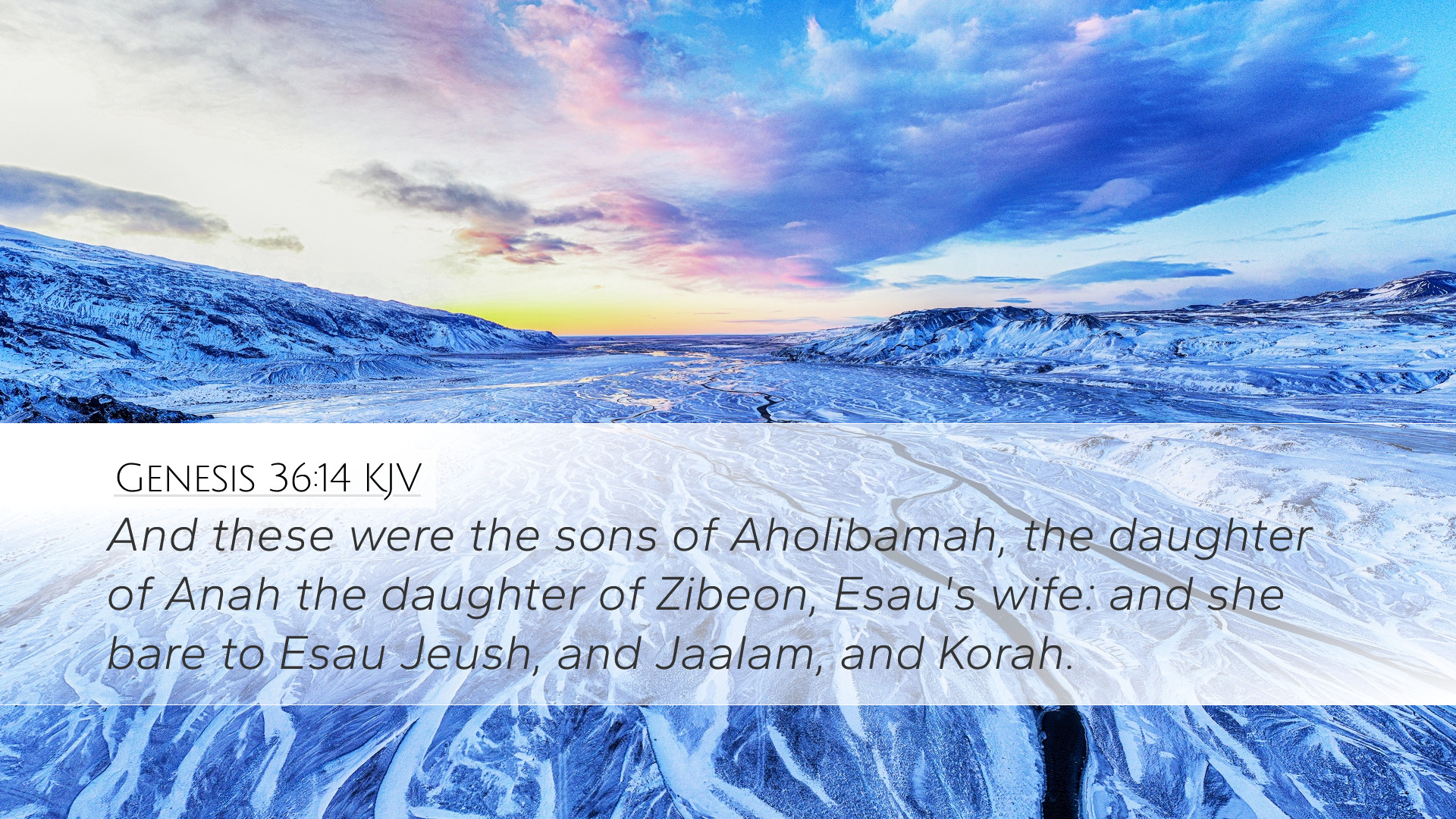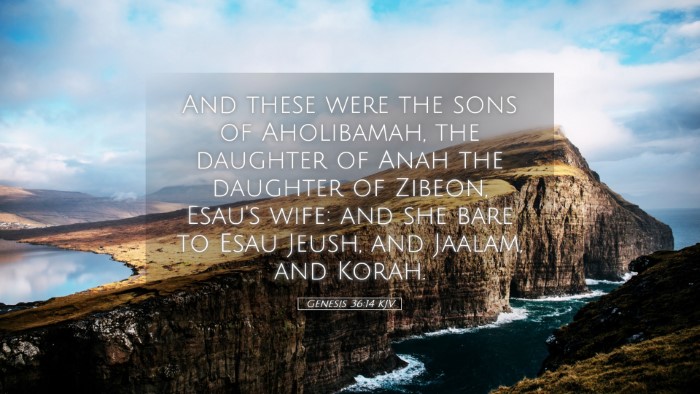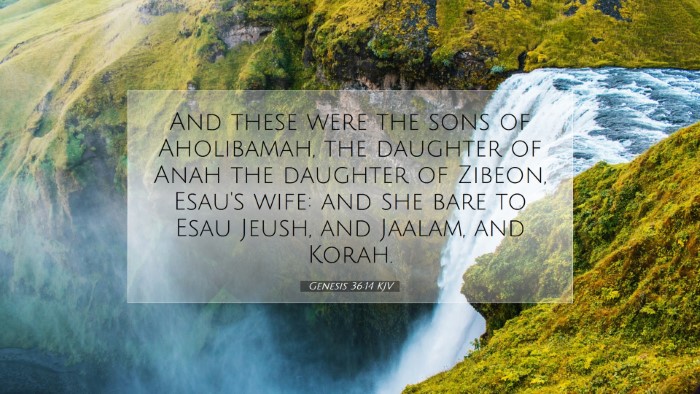Commentary on Genesis 36:14
Verse Reference: Genesis 36:14 - "And these are the sons of Aholibamah, the daughter of Anah, the daughter of Zibeon the Hivite; and she bare to Esau Jeush, and Jalam, and Korah."
Introduction
This verse is part of the genealogical record of Esau, detailing his descendants and the connections to various nations. Understanding this lineage helps illuminate the broader context of biblical history and the unfolding of God's plan through nations. The significance of Aholibamah, Esau's wife and her lineage, is essential, as it sets the stage for later biblical narratives.
Genealogy and Context
Matthew Henry's Commentary: Henry points out that genealogies serve a critical role in Scripture, providing legitimacy and historical context to the narratives. In this instance, the mention of Aholibamah as the daughter of Anah links Esau not only to his immediate family but expands his lineage into the broader Canaanite context.
-
Aholibamah's Identity: Aholibamah is noted to be from a prominent family among the Hivites, an important group in Canaanite culture. Her background is significant as it highlights the blending of Israelites and Canaanites, a factor critical for understanding the subsequent relationship dynamics between these peoples.
-
Descendants of Esau: The names mentioned in Genesis 36:14—Jeush, Jalam, and Korah—are not merely names but reflect the tribes and people that would stem from Esau. Each name carries potential implications for the history of the Edomites and their interactions with Israel.
Theological Insights
Albert Barnes’ Commentary: Barnes emphasizes the theological implications of Esau’s lineage. He notes that the focus on Esau’s children sets a contrast with Jacob’s line, which is integral to the covenant promises. This divergence signifies the unfolding story of God’s people and how His plan involved not just one progeny but multiple nations that play distinct roles in His overarching narrative.
-
Covenantal Relationship: The genealogical separation serves to illustrate God's covenant with Isaac and Jacob, contrasting with Esau, who sold his birthright and would face the consequences of that decision. This leads to a rich discussion on the importance of choices and their ramifications within the divine plan.
-
Divine Sovereignty: God's sovereignty is evident even in genealogies; He orchestrates history through the families of the earth, ensuring His purposes are fulfilled through various individuals and nations, even those that seem distant from the covenant.
Historical Context
Adam Clarke’s Commentary: Clarke delves into the historical context of the Hivites and their role in ancient Canaan. He discusses how Aholibamah's descent illustrates intermarriage among the tribes and the cultural exchanges that occurred, which eventually shaped the identities of the surrounding nations.
-
Influence of Canaanite Culture: Clarke highlights that understanding Esau's intermarriage with Canaanite women is vital for comprehending the cultural and spiritual impacts on the Israelites. This intersection often led to conflicts in later narratives, particularly concerning idolatry and interfaith relations.
-
Formation of Nations: The sons of Aholibamah and their subsequent tribes played a role in the historical landscape of the region. As scholars, it is essential to acknowledge how the interactions between these tribes contributed to the complexities depicted in the narratives of the Old Testament.
Practical Implications for Today
For pastors and theologians, the examination of Genesis 36:14 underscores the importance of understanding biblical genealogies in the formation of theological doctrines. The implications of lineage, covenant, and choice can lead to rich sermons and teachings that emphasize God's sovereignty in our lives.
-
Understanding Choices: The legacy of Esau illustrates how choices can bear consequences that affect future generations. This brings forth the idea that today's decisions, whether individual or collective, have significant outcomes.
-
Interconnectedness of Cultures: The blending of peoples, as seen through Esau's intermarriage, highlights the ongoing need for Christians to engage with diverse cultures while remaining true to biblical principles. This relevance encourages dialogue and understanding in a multicultural world.
Conclusion
Genesis 36:14, while seemingly a brief mention in a genealogy, opens the door to profound discussions regarding identity, choice, and the unfolding plan of God through history. By examining the backgrounds and implications of characters like Aholibamah, Esau, and their offspring, we can gain deeper insights into God's workings in the world, both in biblical times and in our lives today. The interplay between divine providence and human choice remains a central theme that continues to resonate with readers and scholars alike.


